Tom Blankenship is the real Huckleberry Finn — here’s the small-town tale of Mark Twain’s beloved boyhood bud
"Unwashed, insufficiently fed," Thomas Blankenship of Hannibal, Missouri, boasted a big heart and magnetic personality. He inspired childhood chum Mark Twain to create one of America's most endearing fictional figures.
"The Adventures of Huckleberry Finn" enjoys acclaim as the "Great American Novel," its title character a uniquely beloved figure in our national heritage.
Author Mark Twain's riverfront Missouri boy was poor in manners and material wealth, but rich in spirit and charisma.
Huckleberry Finn "is part of the tapestry of not just American culture but American education," said Matthew Seybold, scholar-in-residence at the Center for Mark Twain Studies (www.marktwainstudies.com) at Elmira College in Elmira, New York.
He also told Fox News Digital in an interview, "It is inescapably and irrepressibly American in all its beauty and horror."
Huck Finn, however, was more than just a fictional figure forged from the imagination of a great writer and wit. Huckleberry was a real-life, hardscrabble, all-American boy.
His name was Tom Blankenship.
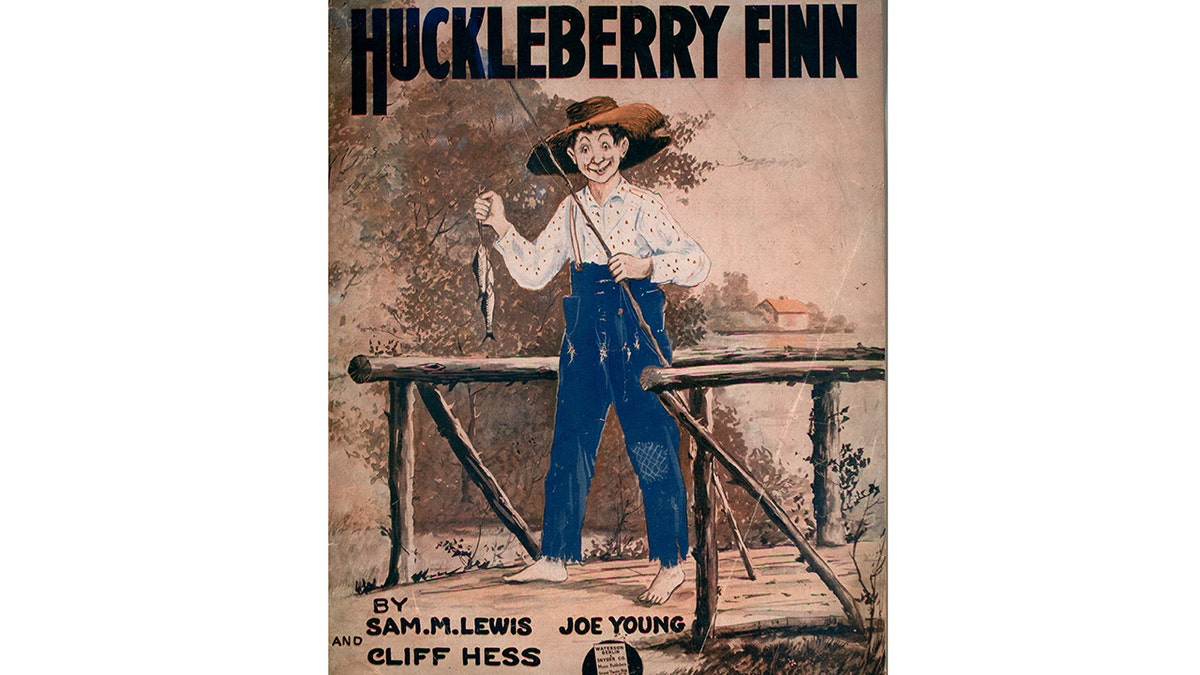
Sheet music cover image of "Huckleberry Finn" by Sam M. Lewis, Joe Young and Cliff Hess, with lithographic or engraving notes reading "Barbelle; FJ Lawson Co NY," New York, New York, 1917. (Sheridan Libraries/Levy/Gado/Getty Images)
He grew up in Hannibal, Missouri, nestled against the Missisippi River on the edge of the American frontier in the 1830s.
He was raised in a dysfunctional family with shiftless, and apparently unemployable, alcoholic parents.
Blankenship was a charismatic and popular child. He impressed the starstruck younger boy and future author, Samuel Langhorne Clemens, when the two met at an unknown time.
Blankenship "was ignorant, unwashed, insufficiently fed," Clemens wrote in 1906 under his better-known pen name in the "The Autobiography of Mark Twain."
Blankenship "was ignorant, unwashed, insufficiently fed. But he had as good a heart as ever any boy had." - Mark Twain
"But he had as good a heart as ever any boy had."
Blankenship apparently possessed an almost naive confidence, magnetic charm, rebellious spirit and an innate moral compass that defied and exceeded that of the civil society that shunned him.
The fictional Finn was painted with a complexity similar to the kindhearted, foul-mouthed Hannibal urchin.
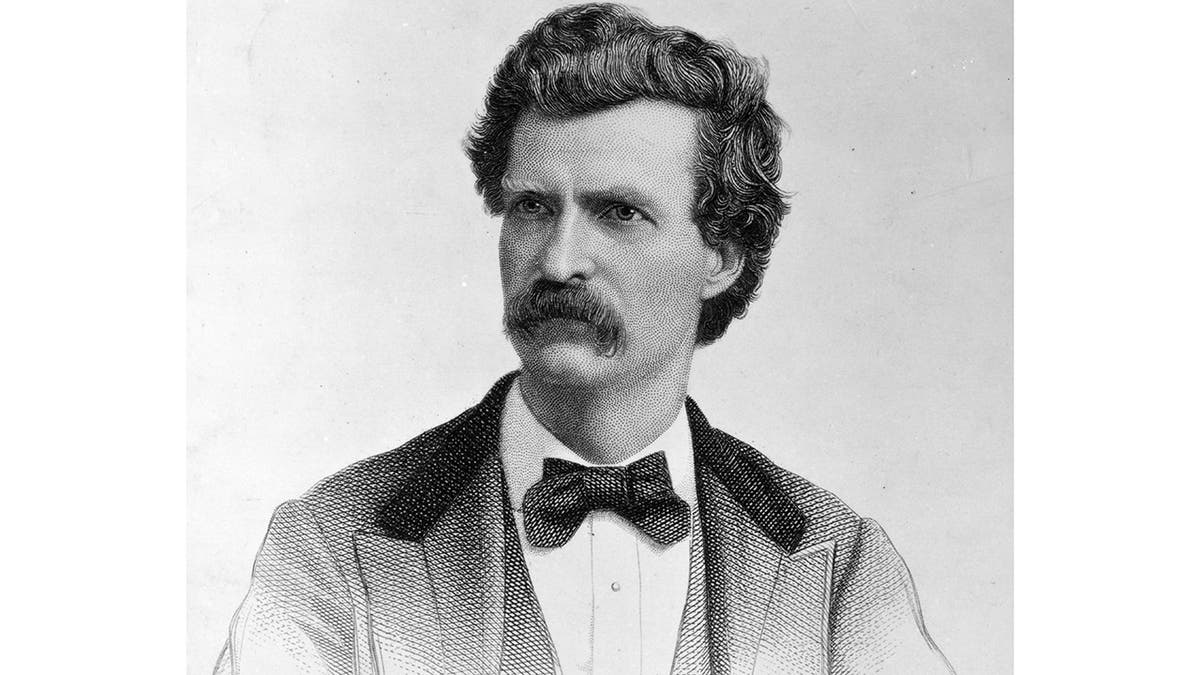
Engraving depicts a portrait of American author Mark Twain (born Samuel Clemens, 1835-1910), mid-to-late 19th century. (PhotoQuest/Getty Images)
"In 'Huckleberry Finn' I have drawn Tom Blankenship exactly as he was," wrote Twain.
MEET THE AMERICAN WHO WROTE ‘BEN-HUR: A TALE OF CHRIST’: UNION GENERAL LEW WALLACE
He also drew Huck Finn as a prism through which the United States might see its undeniable greatness and confront its human flaws — the challenge issued not by president but by pauper, giving "Huckleberry Finn" the power of biblical allegory.
"Huck was underfed, unwashed, unschooled, unchurched, and a master at swearing," Twain scholar George Hendrick of the University of Illinois wrote in 2018.
"As was Tom Blankenship."
Hannibal's ‘juvenile pariah’
Thomas Blankenship was born around 1831, presumably in Missouri, listed as 19 years old in the 1850 Census. He was the second of eight children born to Woodson and Mahala Onstot Blankenship, both of them likely illiterate.
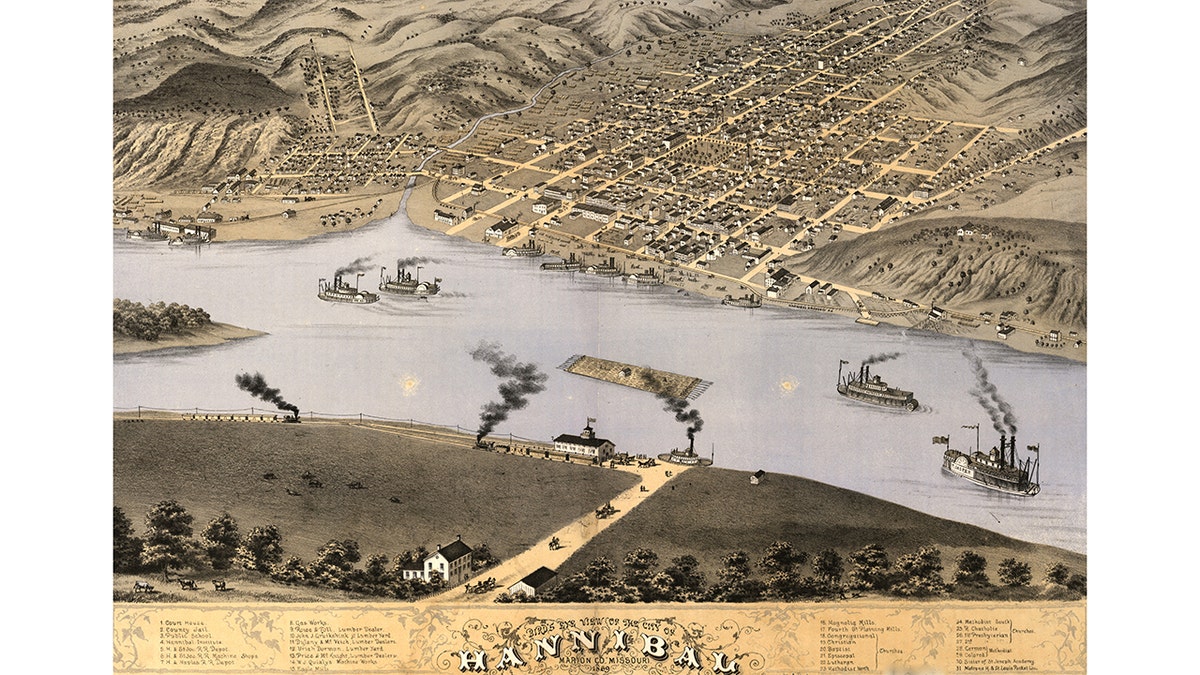
A bird's eye-view map of Hannibal, Missouri, 1869. Steamboats are visible on the waters of the Mississippi River. Illustration by Ruger. (Buyenlarge/Getty Images)
The Blankenships were "undoubtedly considered ‘White trash' by their neighbors," according to Hendrick.
"The parents paupers and drunkards; the girls charged with prostitution," wrote Twain, adding that Tom was "a kindly young heathen."
The family reportedly arrived in Hannibal in 1839 and lived in "a miserable house of bark, under a tree," according to Twain biographer Albert Bigelow Paine, and later moved to a "ramshackled quarters," said Hendrick.
The Blankenships were "undoubtedly considered ‘White trash' by their neighbors."
The Clemens family also moved to Hannibal in 1839, when the future celebrity author was four years old, Blankenship about 8.
Twain was apparently in awe of the older boy, a celebrity in the tiny riverfront town.
Blankenship's "liberties were totally unrestricted. He was the only really independent person – boy or man – in the community, and by consequence, he was tranquilly and continuously happy, and was envied by all the rest of us," Twain later wrote.
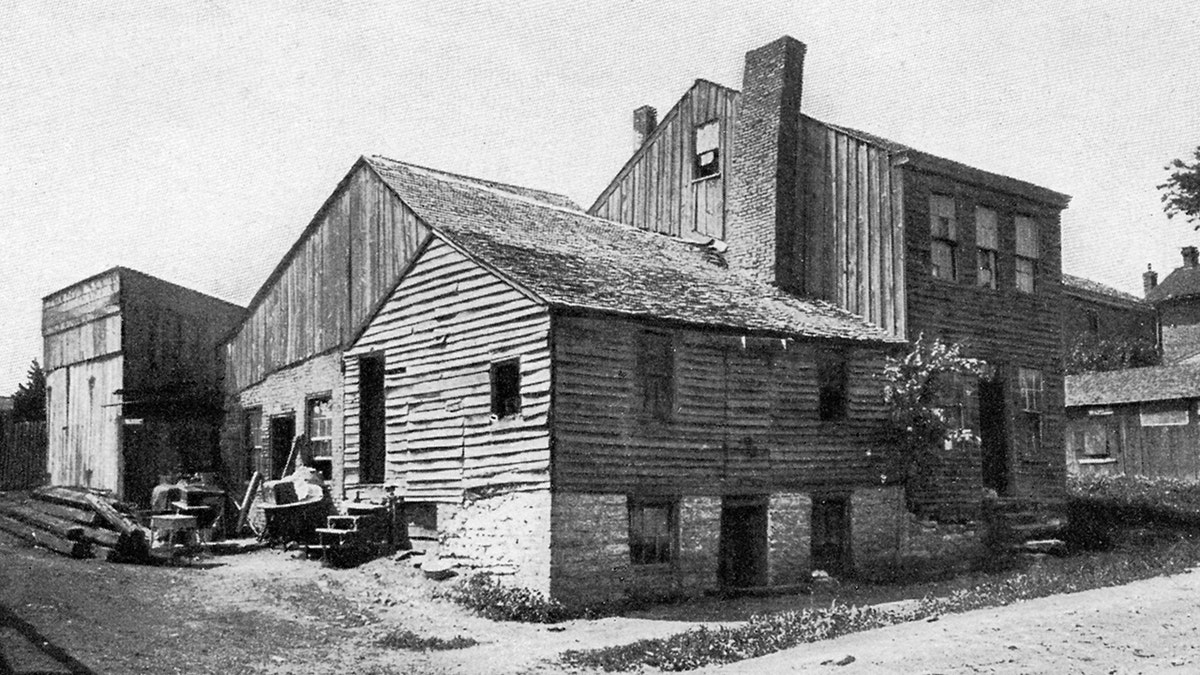
The Hannibal, Missouri, home of Tom Blankenship, the inspiration for Huckleberry Finn, circa 1840-1850, by Mark Twain (pen name of Samuel Langhorne Clemens), American author, satirist, lecturer (1835-1910). (Culture Club/Getty Images)
Blankenship was a rebellious but charismatic outcast, who appeared to possess natural confidence.
The real-life Huckleberry Finn was apparently the coolest kid in Hannibal.
MEET THE AMERICAN WHO INVENTED SLICED BREAD: OTTO ROHWEDDER, HARD-LUCK HAWKEYE
The other kids loved him; the parents despised him.
"We liked him; we enjoyed his society," Twain wrote. "As his society was forbidden us by our parents, the prohibition trebled and quadrupled its value, and therefore we sought and got more of his society than of any other boy's."
Adventures of Tom Blankenship
Tom Blankenship’s alter-ego first gained national prominence as the sidekick in "The Adventures of Tom Sawyer," published in 1876.
Twain introduced Huckleberry as "the pariah of the village" and described him nearly the same way he would later remember his boyhood bud Blankenship.

Circa 1955: A young Mississippi boy balances on the most famous fence in American fiction. It is in front of Mark Twain's house and is supposed to be the one Tom Sawyer whitewashed. (George Pickow/Three Lions/Getty Images)
"Huckleberry was cordially hated and dreaded by all the mothers of the town," Twain wrote in "Tom Sawyer."
"Because he was idle and lawless and vulgar and bad — and because all their children admired him so, and delighted in his forbidden society, and wished they dared to be like him."
"Huckleberry was cordially hated and dreaded by all the mothers of the town, because he was idle and lawless and vulgar and bad."
The seminal storyline of "Huckleberry Finn" was his relationship with the slave Jim.
Their meeting on Jackson Island is based on a real-life event, when Tom Blankenship's older brother, Benson, discovered and protected a runaway slave on a deserted island in the Mississippi River.
"Bence was supposed to know better," said Seybold. "He also could have enriched himself if he had turned him in with a $50 reward."
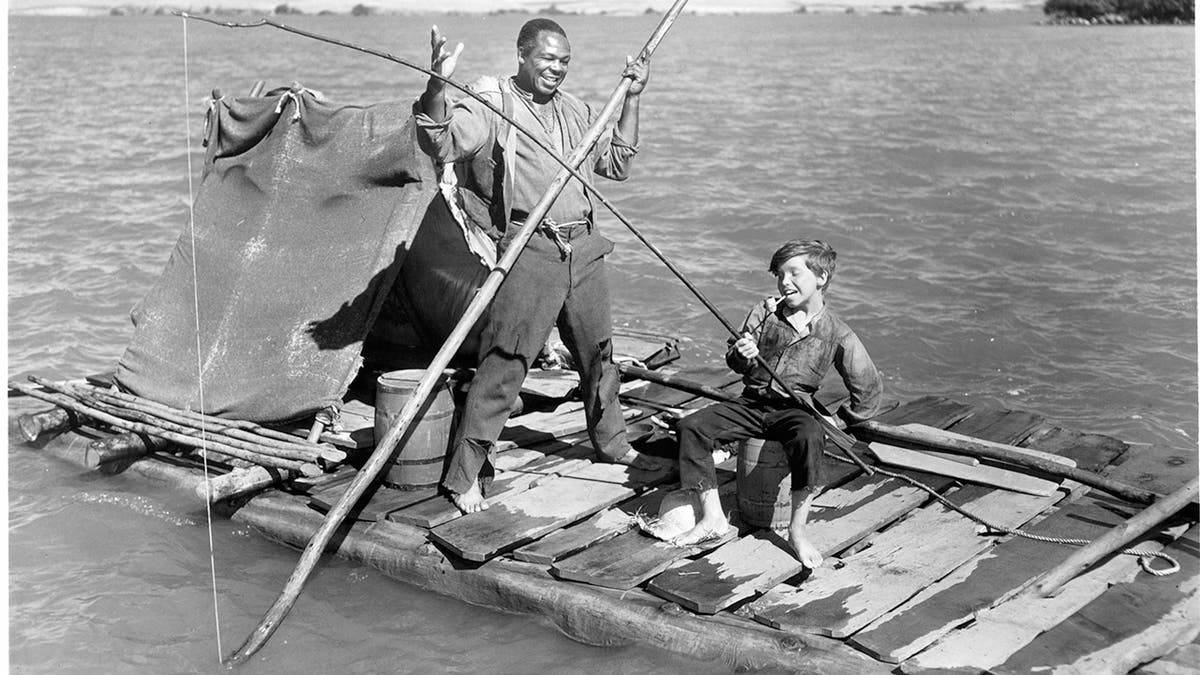
Archie Moore and Eddie Hodges riding down river on a raft in a scene from the film "The Adventures of Huckleberry Finn," 1960. (Metro-Goldwyn-Mayer/Getty Images))
It was an act of "nobility,' the Twain scholar added, that "this very poor guy could have made money by turning in this enslaved man to whom he had no loyalty, but instead bore the weight of it once it was discovered."
The event spoke to an innate moral decency in the Blankenship family that was otherwise indecent by every visible measure.
It's one of the reasons Twain made Huck Finn his most admirable character, even more admirable than his own fictional alter-ego, Tom Sawyer,
"Twain as a child certainly admired Tom," said Seybold. "And that admiration was passed onto Huckleberry Finn."
Source of ‘all modern American literature’
Thomas Blankenship died on an unknown date. His was a life lived largely in obscurity, defying the fame of his literary alter-ego.
"I heard, four years ago, that [Blankenship] was Justice of the Peace in a remote village in Montana and was a good citizen and greatly respected," Twain wrote.

The cover of the "Adventures of Huckleberry Finn" by Mark Twain. (Carolyn Cole/Los Angeles Times via Getty Images)
That version of his life has since been disputed by scholars, and by notes found in later versions of Twain’s autobiography.
Evidence exists of a life lived in hunger and petty crime, fulfilling the prophecy of his poor and rebellious boyhood existence.
"All modern American literature comes from one book by Mark Twain called ‘Huckleberry Finn’ …. It’s the best book we’ve had." — Ernest Hemingway
The Hannibal Daily Messenger reported "wholesale thieving" in the Bay neighborhood in its June 12, 1861, edition.
The heist included "two valuable horses … a large lot of bacon, a 6-gallon jar of butter … a washtub full of clothes … a large quantity of sugar and 10 gallons of molasses … [and a] chicken house robbed."
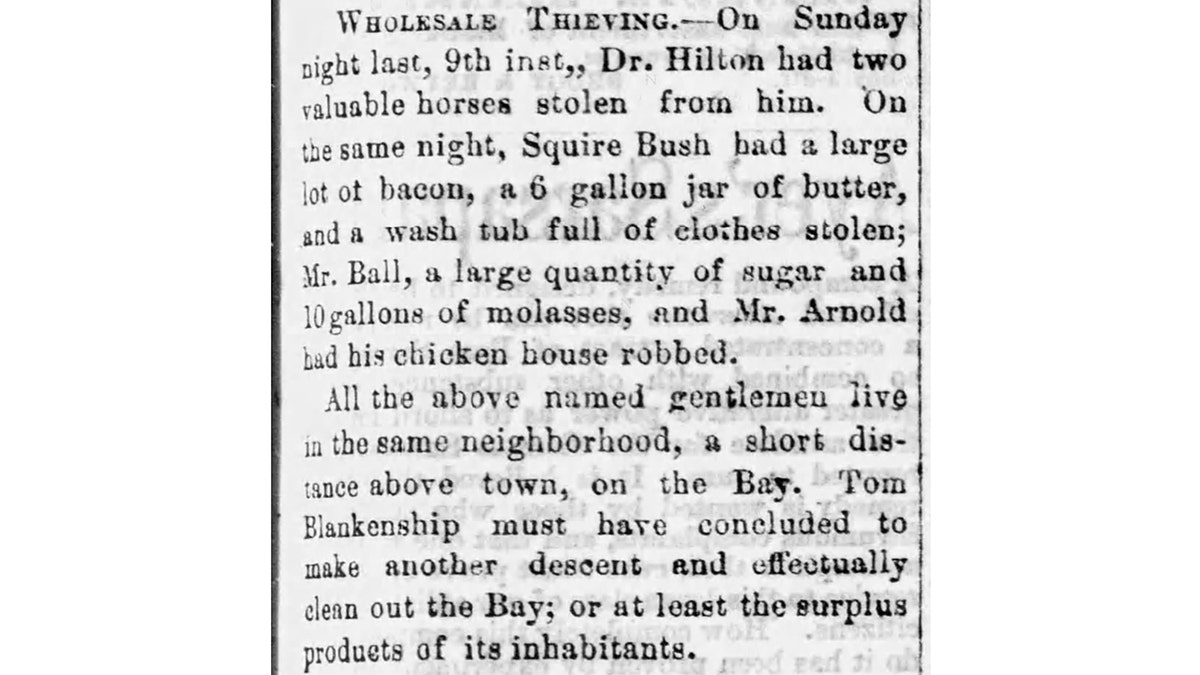
Tom Blankenship was Mark Twain's boyhood pal and the real-life inspiration for Huckleberry Finn. The Hannibal (Missouri) Daily Messenger reported on "widespread thieving" on June 12, 1861 — blaming Blankenship, who would have been about 30 years old. (Center for Mark Twain Studies)
The paper fingered the culprit and accused him of serial thievery.
"Tom Blankenship must have concluded to make another descent and effectually clean out the Bay; or at least the surplus products of its inhabitants."
His life was filled with other reports of petty crime before his life vanished from public record.
CLICK HERE TO SIGN UP FOR OUR LIFESTYLE NEWSLETTER
Blankenship was a living embodiment of the complexity and dichotomy of the American story, of the human species itself, of Huckleberry Finn.
He remains a paradox in death. Blankenship was born an urchin and died in anonymity; yet the beloved Huckleberry Finn forever floats down the Mississippi River and the American cultural narrative, his friend Jim by his side.

Left, Archie Moore and Eddie Hodges riding down river on raft in a scene from the film "The Adventures of Huckleberry Finn," 1960. Right, illustration by E. W. Kemble, 1884. (Metro-Goldwyn-Mayer/Getty Images; History & Art Images via Getty Images)
"All modern American literature comes from one book by Mark Twain called ‘Huckleberry Finn’ … It’s the best book we’ve had," Ernest Hemingway wrote in "Green Hills of Africa," his 1935 nonfiction safari adventure.
CLICK HERE TO GET THE FOX NEWS APP
"All American writing comes from that. There was nothing before. There has been nothing as good since."
To read more stories in this unique "Meet the American Who…" series from Fox News Digital, click here.
For more Lifestyle articles, visit www.foxnews.com/lifestyle.

























